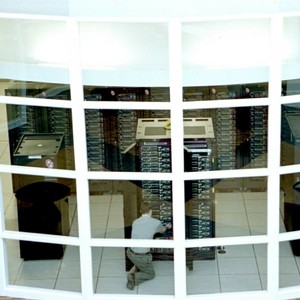NORMAN—The University of Oklahoma will play an active role in the South Big Data Regional Innovation Hub—a new National Science Foundation initiative to build innovative public-private partnerships that address regional challenges with big data analysis. The South Big Data Regional Innovation Hub, led by the Georgia Institute of Technology and the University of North Carolina’s Renaissance Computing Institute, serves Oklahoma and 15 other states as well as the District of Columbia.
“The collection and analysis of data, ranging from atmospheric observations to patterns in online shopping, are critically important to our everyday lives. OU’s participation in the South Big Data Regional Innovation Hub will lead to new approaches for integrating data from disparate sources and synthesizing it for effective decision-making,” said Kelvin Droegemeier, vice president for research on the OU Norman campus.
OU’s efforts in the South Big Data Regional Innovation Hub will be directed by Le Gruenwald, professor of computer science, the OU Gallogly College of Engineering, and Henry Neeman, assistant vice president for information technology and research strategy advisor. OU and many collaborators from the southern states face large-scale challenges that require collaboration and big data analysis. Among those challenges are scientific and social matters in five areas: health care, coastal hazards, industrial big data, materials and manufacturing, and habitat planning.
The southern coasts are highly populated and impacted by climate change and by environmental conditions associated with severe weather storms, such as hurricanes. The study of coastal hazards involves the potential integration of large amounts of regional data and access to computational resources for modeling resilience to storms, storm surge, impacts from sea level rise and human responses to hazardous events.
OU participates in developing the ADvanced CIRCulation coastal simulation software package, a key application for coastal hazard forecasting—an unstructured mesh shallow water, community-based model. It was used after Hurricane Katrina by the Federal Emergency Management Agency for new flood maps for U.S. coastal areas. That led the Nuclear Regulatory Commission to use the application in flood studies for nuclear power plant operation following Japan’s Fukushima disaster.
The National Oceanic and Atmospheric Administration, Department of Homeland Security, Corps of Engineers and others use the application for prediction of storm surge and flooding, and the state of Louisiana uses it for coastal restoration. OU’s Advance CIRCulation team leads a Parallel Computing Center focused on making the application able to process more data faster, to allow longer lead times and more accurate forecasts, both of which are crucial to saving lives and property.
A national leader in weather prediction and weather radar research, OU has complementary capabilities in coastal hazards calculations and big data analysis. OU’s weather groups have archived over 750 TB of forecast and observational data—the capacity of 30,000 Blu-Ray discs, and these data sets continue to grow. OU’s Center for Analysis and Prediction of Storms has led a spring real-time storm forecast experiment for many years as part of an ongoing collaboration with both NOAA and other academic researchers.
The impact of tornadoes, high winds, snow, flash floods and other severe weather can be mitigated by timely, accurate prediction. Advanced weather radar, such as Atmospheric Imaging Radar developed at OU’s Radar Innovation Laboratory provides volumetric radar data sets in seconds, in support of improved prediction, to protect Americans from some of nature’s most dangerous severe weather events.
For information about OU’s role in the NSF South Big Data Regional Innovation Hub, contact Le Gruenwald at ggruenwald@ou.edu or Henry Neeman at hneeman@ou.edu.



